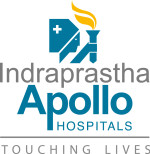Minimally invasive cardiac surgery
Small incisions and specialised equipment are used in minimally invasive cardiac surgery, also known as keyhole or endoscopic surgery, to get access to the heart. This procedure is less intrusive than open-heart surgery as a whole, and it may lead to a quicker recovery, less scarring, and fewer complications. Transcatheter aortic valve replacement (TAVR), percutaneous mitral valve repair, and endoscopic ablation for atrial fibrillation are examples of minimally invasive procedures. The majority of the time, small incisions in the chest are used to implant thin, long devices and a small camera during minimally invasive treatments.
CABG
Conventional CABG or Coronary Bypass surgery is performed by splitting or cutting through the breastbone or sternum. MICAS or MICS CABG is a safe and complete operation that has revolutionised the way coronary surgery is performed. Apollo Hospitals has successfully completed 400 and more such surgeries.MICS CABG or MICAS stands for minimally invasive coronary artery surgery. It is a relatively new and advanced technique of performing coronary bypass for coronary artery disease. In this technique the heart is approached through the side of the left chest via a small 4cm incision. This cut is placed just under the nipple. The chest is entered between the ribs without cutting any bones and by splitting the muscle.Similar to a regular heart surgery the operation is performed using all arteries or a combination of arteries and veins removed from the leg. The vessel from the leg in these operations is also removed endoscopically without cutting the skin over the leg. Highly advanced instrumentation and advanced techniques allow for the operation to be performed very safely.
Why MICS CABG?MICS CABG has several advantages over the traditional technique:
- First and foremost is the fact that no bones are cut. This has several advantages in reducing pain, retaining function and having a positive effect on breathing. Unlike traditional heart surgery return to normal life including driving or other activities is not disrupted and can be started almost immediately.
- Second, blood loss is almost negligible eliminating blood transfusion in most and eliminating blood borne infection.
- Third, all infections are reduced whether it be wound infections or post surgical lung infection. This makes the procedure ideal in diabetics and older patients who have poor resistance to infection.
- Fourth, the incision is so cosmetic and measures just 2 – 3 inches that it’s practically impossible to tell that a heart operation has been done.
- Fifth, the procedure lasts only 4 days unlike the conventional heart surgery that takes 9 days.
All these benefits put together make for ultra short hospitalization and recovery. The best part is that all the blocks irrespective of their location in the heart can be bypassed in a safe and predictable manner.
FAQs
1.What is MICS CABG?
This is a technique of coronary artery bypass or CABG wherein the entire operation is performed from the side of the chest (on the left) through an incision that is about 2 inches.
2.How does it differ from conventional CABG?
Conventional CABG or Coronary artery bypass requires the breast bone or sternum to be cut into half. Recovery from conventional bypass surgery requires a longer duration upto 8 weeks as the bone needs to heal. In MICS CABG, the operation is performed through the side of the chest wall. No bones are cut and healing is rapid. Healing is usually complete in ten days.
3.Will MICS CABG help me leave the hospital early and get back to work?
Definitely yes! This is exactly the reason to do this operation. Hospital stay is as short as 2 days and most patients get back to work or normal in 10 days.
4.Is it a beating heart operation?
Yes, it is an off pump or beating heart operation. The support of a pump may rarely be required but the operation is still performed on the beating heart. Pump support may particularly be used when the heart is weak.
5.Are MICS CABG and MIDCAB one and the same?
No, they are not the same. MIDCAB is an old technique where only one or two vessels can be grafted. It Is often confused with the modern MICS CABG if one is unaware about recent developments.
6.I am a diabetic. Is MICS CABG appropriate for me?
Absolutely. You may be the ideal candidate for MICS as infection rates are almost epminated. The quality of your vessels will dictate whether you are suitable for this technique and your surgeon is the best judge.
7.What is the risk of infections after MICS CABG?
The risk of infection is close to zero. All infections are reduced dramatically in MICS CABG even in diabetics.
8.I am a smoker/asthmatic. Is MICS CABG still an option for me?
Yes. It could be the ideal option for you. It’s best for your surgeon to take that decision along with your respiratory therapist.
9.Are all patients with multivessel blocks candidates for MICS CABG?
No, not all patients with multivessel coronary blocks are candidates. Those with extensive disease or very poor heart function are not suitable for this technique. Your heart surgeon is the best person to decide whether you are a candidate or not for this kind of operation.
10.Is MICS CABG performed in all centers?
No, not all heart surgeons are trained in MICS. Including ours, there are only a handful of centers all over the world that are capable of performing MICS safely.
Endoscopic Vein Harvesting
Endoscopic vein harvesting (EVH) adds benefit to MICS CABG. State of the art equipment ensures quality with exceptional patient comfort. EVH is a technique of harvesting the leg vein used as bypass conduits with an endoscope.


